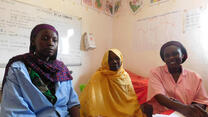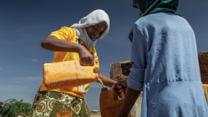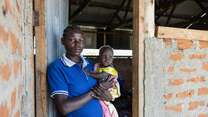Allowing women and their partners to choose the size of their families and the timing of births is critical to reducing maternal and child mortality rates in humanitarian contexts. Research indicates that short birth spacing is associated not only with elevated risk of maternal death, but also increased neonatal, infant and under-five mortality, and child malnutrition. Family planning (FP) is an effective strategy for addressing these public health issues. The IRC makes a wide range of family planning methods available to clients, including short-acting methods, such as oral contraceptive pills and injectables, long-acting methods, like implants and IUDs and permanent methods, such as tubal ligation and vasectomy.
This analysis examines four family planning programs in the Democratic Republic of the Congo (DRC), Kenya, Liberia, and Myanmar, and considers the cost efficiency of delivering family planning services in each case. Rather than looking at the cost per person served, the analysis focuses on the cost per couple-year of protection (CYP), reflecting variations in length of efficacy and continuation of use of different FP methods. The analysis examines the ingredients necessary to implement such programs, establishes how much those programs cost per couple-year of protection provided, and considers the causes for differences in the cost-efficiency of such programs across these four countries.
- The cost efficiency of these four programs averaged $47 per couple-year of protection, which given fertility estimates suggests that it costs around $188 for every unintended pregnancy prevented. These costs can be thought of relative to the costs they help to avoid, particularly the high maternal and child mortality that are associated with unintended pregnancies in humanitarian settings.
- The majority of resources for these family planning programs go into the community engagement, training of health care workers to provide services, and ensuring the infrastructure is in place in health systems to facilitate distribution. In many contexts the cost of the actual family planning method is provided in-kind or can be procured through government health operations. But despite theoretical availability of family planning services, take-up remains low in many humanitarian and development contexts. Thus, FP programming must address not only the provision of FP commodities, but the knowledge gaps about the value of using family planning, and the ability of health workers to deliver high quality services.
- The cost efficiency of family planning distributions depends heavily on the mode of family planning services provided. The amount of staff time and resources spent in community engagement, training of health workers, and support to health facilities varies for different contraception methods. For example, a surgical procedure such as a tubal ligation will require more highly trained staff and specialized equipment than the simple distribution of oral contraceptive pills. Additionally, some methods are more effective at preventing pregnancy than others and can prevent pregnancy for different lengths of time.
- The cost structure of these programs suggests that interruptions in funding—which require new investments in building up infrastructure and establishing trust with communities when programming restarts—will dramatically lower the cost efficiency of family planning programs. Ensuring good value for money in reproductive health programs happens not only in the design of individual programs, but also in the design of funding mechanisms and timelines.



